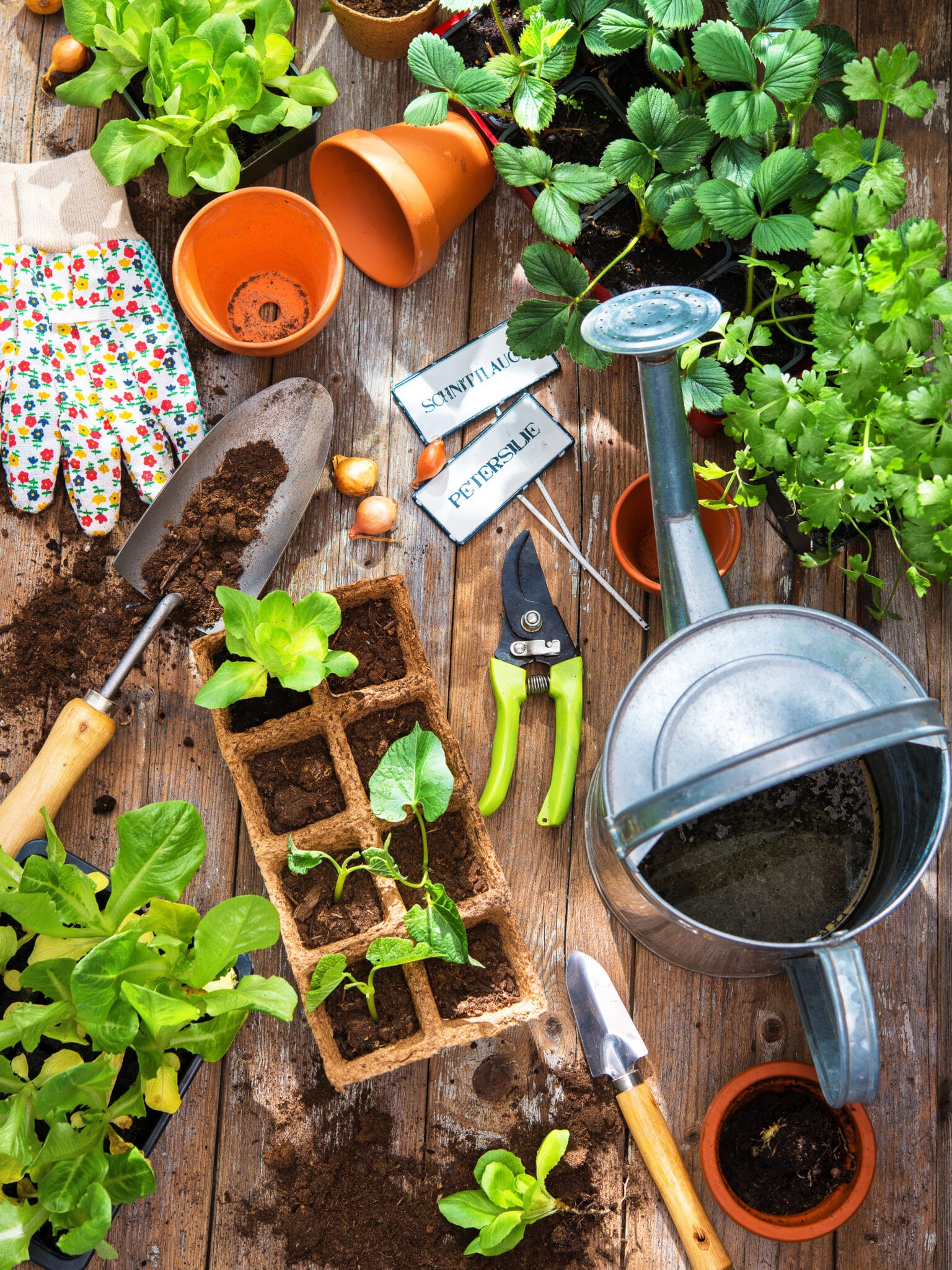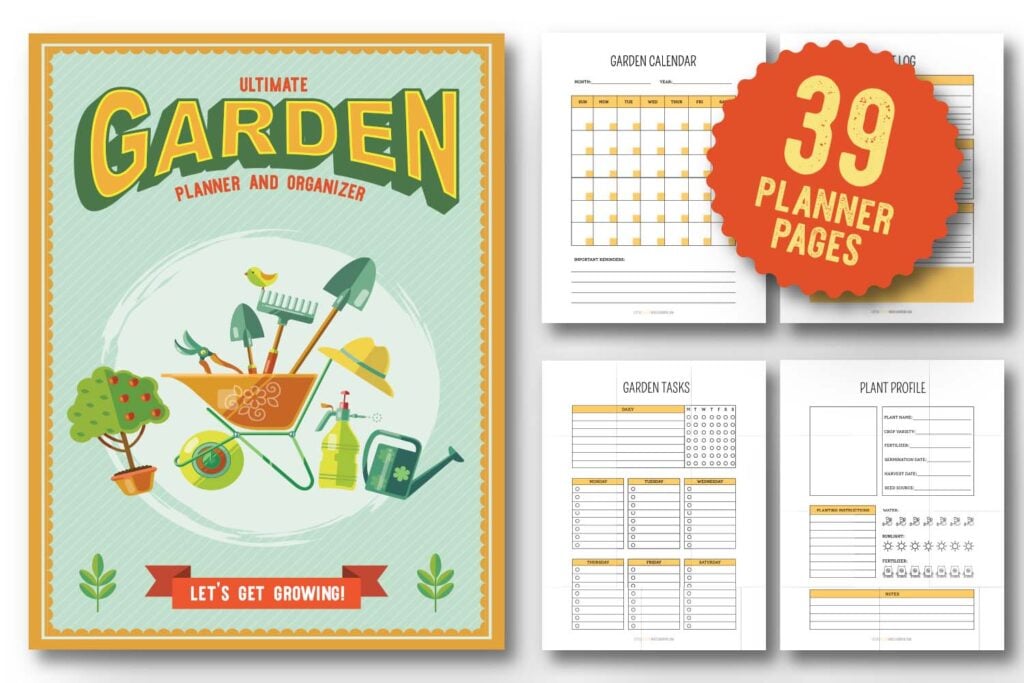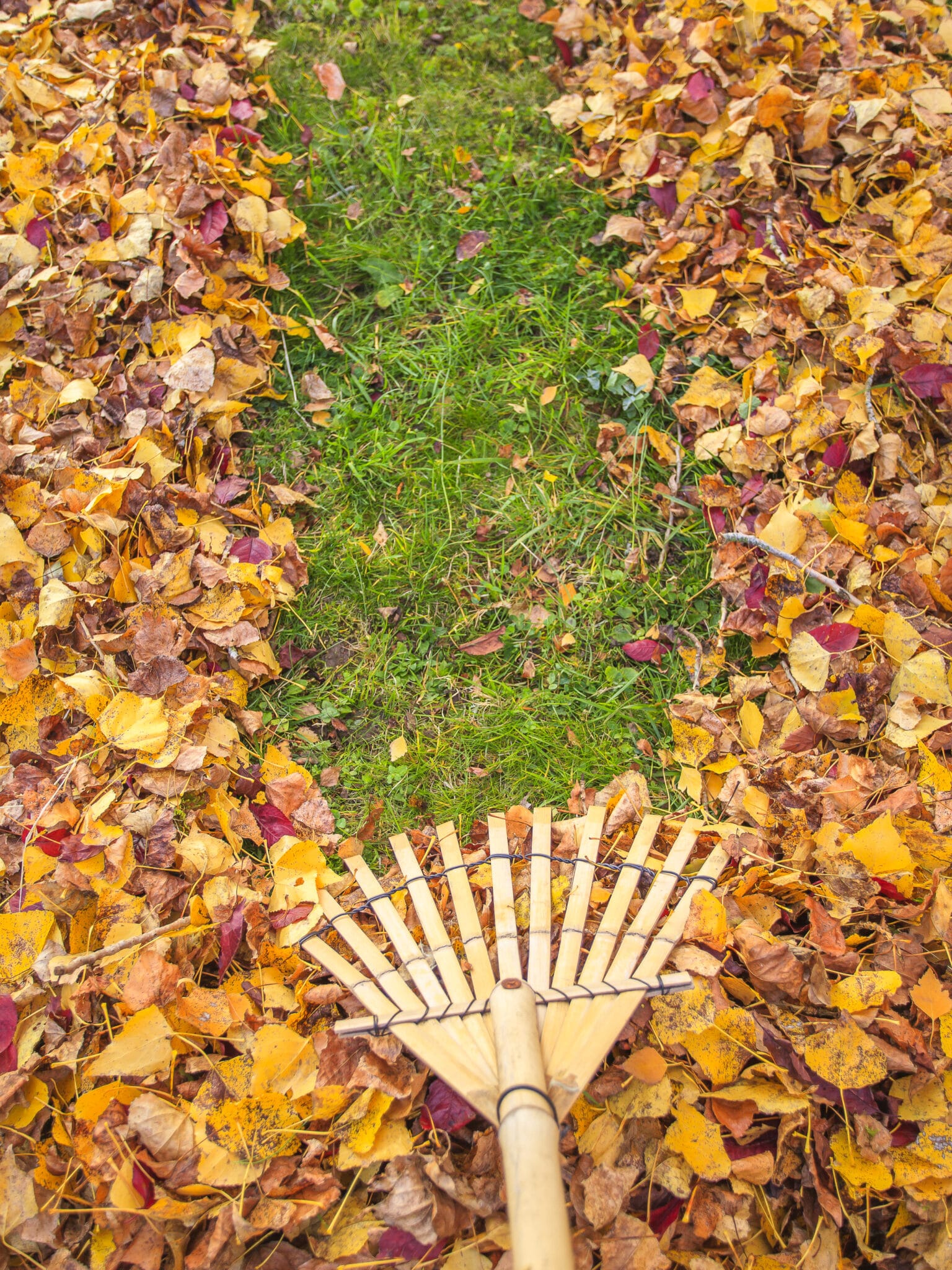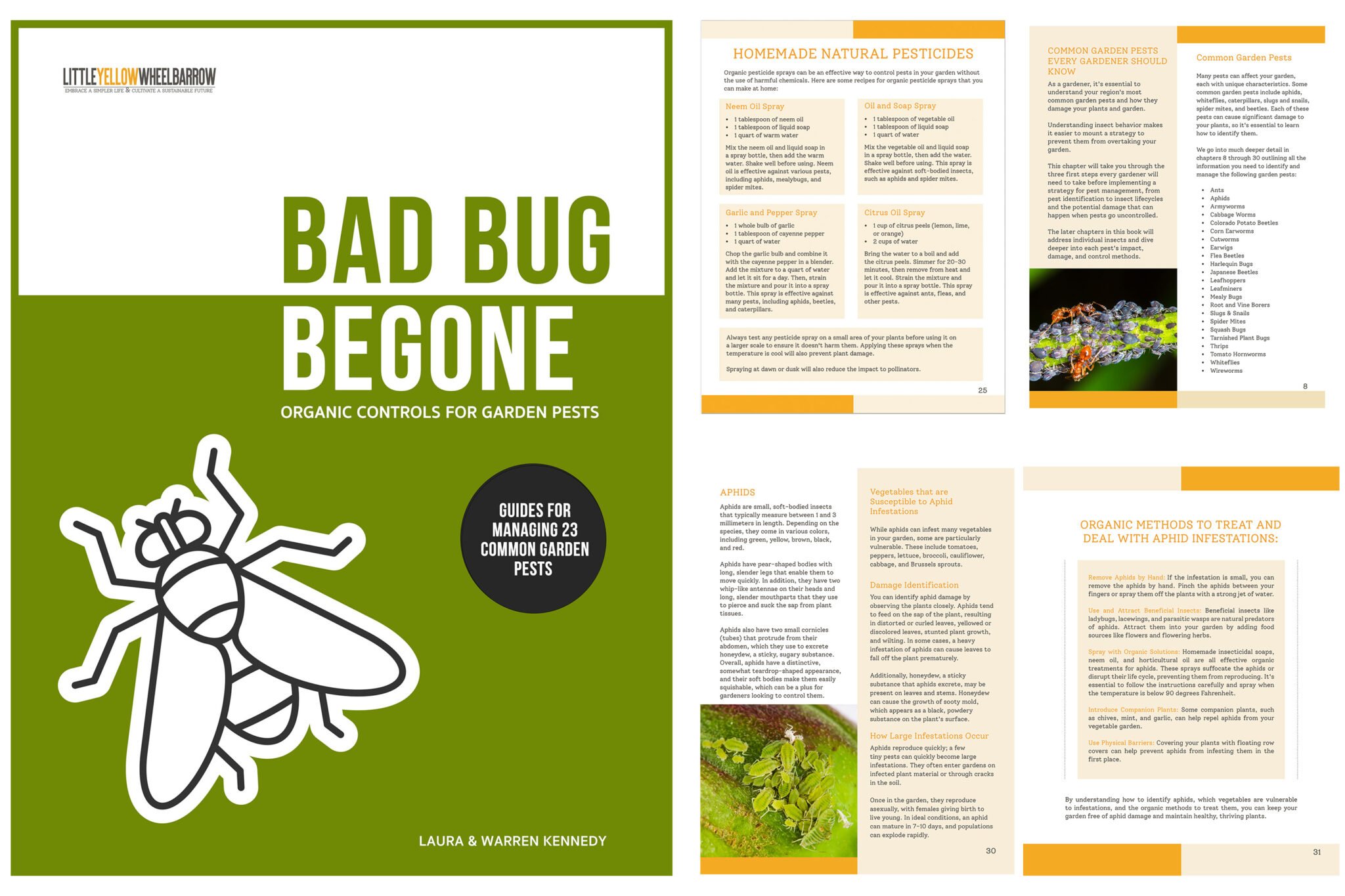Spring Gardening: Here’s Everything You Need To Know
As the days start getting longer and the temperatures warm up, it’s time to get your garden ready for the season (woohoo!). Here’s everything you need to know about spring gardening.
Successful gardening takes more than simply throwing seeds (or small plants) in the dirt and letting them “do their thing”. Gardeners who want prolific gardens know that a certain amount of prep work is needed to enjoy those high yields you crave.
Unfortunately, if you do an internet search on spring gardening, you will find a ton of information covering a TON of different topics. It’s enough to make your head spin!
That’s why I’m simplifying it for you into 6 simple steps.
Your spring gardening tasks will require a little planning and elbow grease, but the job doesn’t need to be over-complicated into tons of steps!

Your Spring Gardening Task List
If you want to find yourself “drowning” in cucumbers, peppers, tomatoes, and more, use these tips to set yourself up for success.
1. Decide What You Want To Plant
Believe it or not, your spring gardening checklist begins not with digging, but rather with planning.
Chances are you don’t have space or the time to plant everything you would love to grow! If you do have a huge garden area – I’m jealous (and good for you 🙂)! However, if you’re like me, you need to sit down and decide what you’re going to plant this year before you break out your shovel.
Different plants have different needs and can tolerate different climates. So, it’s hard to triangulate all that information into one easy reference list. But, guess what? I’ve done it for you!
Here’s a list of vegetables and flowers that you can plant in early spring.
Cool Weather Vegetables
These veggies need to be planted after the last frost. But, since they can tolerate cooler temperatures, you can plant them earlier in the season and get a jump on your garden produce:
- Broccoli
- Cabbage
- Spinach
- Cauliflower
- Brussels sprouts
- Carrots
- Rhubarb
- Snow Peas
- Asparagus
- Lettuce
- Kale
- Radish
- Beets
- Garlic
Related: Many of these cool-weather crops also work great in a fall garden, or even a winter garden! It’s a great way to get even more produce out of your garden.


Annual Flowers (flowering plants that only grow for one season and then die)
Some people prefer growing annuals while others prefer growing perennials. I’ve broken the list down into these categories to eliminate confusion between the two.
- Marigolds
- Osteospermum
- Calendula
- Geraniums
- Petunias
- Sweet Alyssum
- Snapdragons
- Pansies
- Larkspur
- Zinnias

Perennial Flowers (flower plants that return year after year)
If you prefer to grow perennials or a mix of annuals and perennials (or even companion planting of veggies and flowers), the flowering plants on this list can be planted in cooler weather.
- Peonies
- Coneflowers (Echinacea)
- Virginia bluebells
- Baby’s Breath
- Lavender
- Foxglove
- Bleeding Heart
- Violets
- Sedum
- Irises
- Bee balm
- Columbine
- Primroses

These are just some examples of plants that can be planted a little early – once you’ve chosen as many of these as you want, go ahead and pick out all the other wonderful vegetables and flowers you want to grow this season.
Related: If you like this article, check out our article on winterizing your garden so it is ready for spring!
2. Plan Your Spring Gardening Sowing Schedule
Once you determine what you want to plant this season, you need to decide on your sowing schedule, which could be impacted by several factors.
Sowing Placements
Some plants will do well when sowed directly into the garden bed, but others may benefit from getting established in controlled indoor conditions before transplanting outside. You might be able to get an early start with these indoor starters before you do the outdoor steps listed below.
Tip!
Consult your seed packets for more info on each plant’s sowing schedule.
Climate Control
The climate plays a part in your planting schedule because if you have a short growing season, you may want to start seeds indoors to extend your growing season as long as possible.
And of course, some plants can be planted right away while others need to wait until the weather and soil warm up a little more.
Spaced Intervals
Finally, if you want to have staggered plantings and harvests of the same vegetables, you’ll need to plan out a sowing schedule that includes plantings at spaced intervals.
I personally find it helpful to write out my planting schedule rather than trying to keep it all straight in my head! After I decide when I’ll plant different plants, I’ll write down on my calendar to help me keep track at a glance.

3. Fine Tune Hardscaping
Everyone knows that landscaping is the plants and living parts of your yard, but have you heard of hardscaping? Hardscaping is non-living parts of your yard: rocks, bricks, pavers, stepping stones, wood, concrete, decks, pergolas, benches, etc.
Your hardscaping gives your yard definition and structure, while your landscaping adds the beauty and living element.
Hardscaping chores may include jobs such as:
- Replacing rotted wood
- Repairing damaged fencing
- Levelling stepping stones
- Expanding the edges of your garden beds
When the weather starts to warm up – but before you begin planting – inspect your hardscaping and make any repairs, additions, or adjustments to it before you begin planting. Doing this early on will save you tons of time (and headaches!) later. Trust me. 😉

4. Do A Spring Yard Clean-Up
If you’re fortunate enough to live in an area where winters are mild and many plants can survive without too much work, you may find that your spring cleanup tasks will vary slightly.
I, however, live in Zone 3, and winters get cold. When spring comes, it’s time to get the yard cleaned up and remove all the dead growth from the previous year.
Examples Of Spring Clean-up Jobs:
- Take a look around your yard for damaged plants and ornamental objects and remove them
- Trim back any overgrowth
- Remove any dead plants
- Cut back ornamental grasses
- Divide perennials
- Remove weeds
Learn More: We have a post all about how weeds grow and how to properly manage them throughout the growing season.

5. Spring Garden Soil Prep
Before you start putting seeds and plants in your dirt, it’s essential to prepare the dirt so that it contains the necessary nutrients your plants need to thrive. Keep it simple by following this checklist (this applies to both garden beds and containers).
Turn The Soil
Now it’s time to pull out those gardening tools! Your soil will compact over the winter, and it’s important to loosen it up by turning it. As you turn the soil, remove any debris and dead stalks or root veggies from the previous year.
Test The pH
Honestly, this test isn’t necessary every year, but doing it once every 2-3 years can give you an idea of your soil’s pH levels. Some plants do well in certain pH levels, while those same levels can harm other plants.
Add Soil Amendments
Plants draw nutrients out of your soil in order to grow.
As you prepare your soil in the spring, add some fresh material to the garden beds and mix it in thoroughly to replenish the depleted minerals and nutrients. Compost, peat moss, manure, and grass clippings are all good options.
Did you know that your compost pile can be active through the winter? Check out our complete guide to winter composting to give your pile a head-start in spring!

Top With Mulch
Mulch is organic matter that’s used as a top layer for your garden soil. It helps the soil retain moisture and reduces weed growth.
You can use many different materials as mulch, including wood chips, pine needles, grass clippings, sawdust, and more. As the mulch breaks down over time, it will deposit more organic matter and nutrients into your garden.

6. Clean Out Water Features
After the leaves fall in autumn and organic matter turns to sludge over the winter, it’s time to clean your water features thoroughly.
Do a spring clean out following these steps:
- Drain them of water
- Power wash or scrub them down to remove settled debris
- Clean out or replace any filters and pumps
- Refill with fresh water
- Turn on any pumps
- Add your chosen algae control method to maintain a healthy ecosystem
Water features add beauty to your garden; keeping them clean will ensure they continue to add that beauty without breaking down and causing headaches.
7. Consider Your Pests, Both Big and Small, And Plan
Your garden will inevitably play host to insects, mammals, and birds that can help and hinder your garden. Your job as a gardener is to know what pest pressures (big and small) may impede your journey and prepare in advance.
If you are new to your gardening area, ask a neighbor, a local gardening group, or a Reddit community. When we first moved to Nova Scotia, we had to gear up for ticks, potato bugs, cucumber beetles, and squash bugs as they were numerous (compared to what I was used to), and our neighbors were very generous with information.
We planted companion plants with this in mind and used row covers on particularly challenging crops.
Learn More: We have a few guides you may find helpful while trying to plan your offense against pests!
BAD BUG BEGONE!
$5.99
Are harmful insects running your gardening season?
Our guide to organic pest control methods offers practical solutions for dealing with common garden pests without using harmful chemicals. With step-by-step instructions and easy-to-follow tips, you’ll learn how to create a pest-resistant garden that is safe for your family and the environment. A great on-hand resource for any gardener!

A must-have resource for Gardeners
Our digital e-book is for you if you’re a home gardener passionate about growing healthy, pesticide-free plants! Over 100 pages of organic pest management information are perfect for beginner gardeners and pros alike.
Final Thoughts on Spring Gardening
Once you’ve completed all these prep steps, your garden is Spring-ready, and you can put seed to soil. Now that your soil is prepped and you’ve got your plan in hand, all you’ve got to do is get out there and start planting!
Spring is one of my favorite seasons when it comes to gardening. I love to get out in the fresh air and use my pent-up energy from winter to prepare my gardens!
Spring gardening is a simple process of planning, cleaning out, and prepping your gardening areas, but it’s key to a successful – and fruitful – gardening season!
More Gardening Inspiration
- Flowers that Grow in the Shade: The 14 Best Options
- 9 Best Flowering Shrubs to Plant for Great Curb Appeal Landscaping
- How To Grow Strawberries In Pots For BIG Harvests
- How to Grow Coral Bells (Heuchera)
- How to Plant Drift Roses – Planting, Care and Pruning
- How to Grow Clematis And Keep it Coming Back
- When to Harvest Broccoli for the Freshest and Most Flavorful Bites




